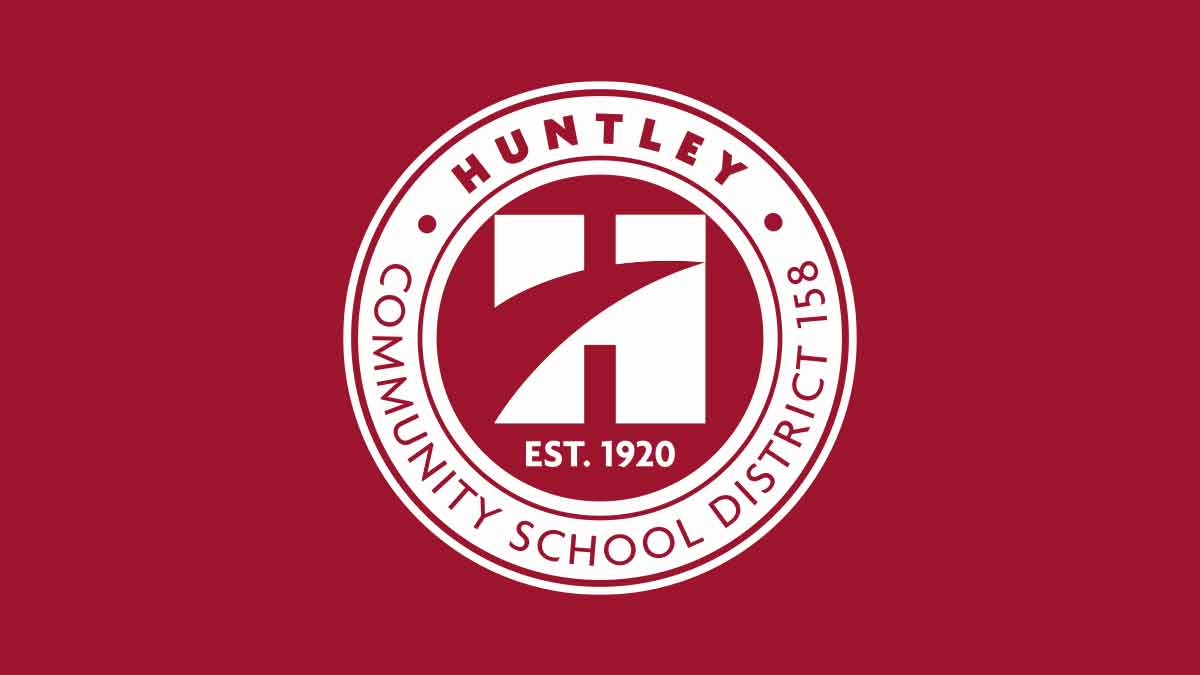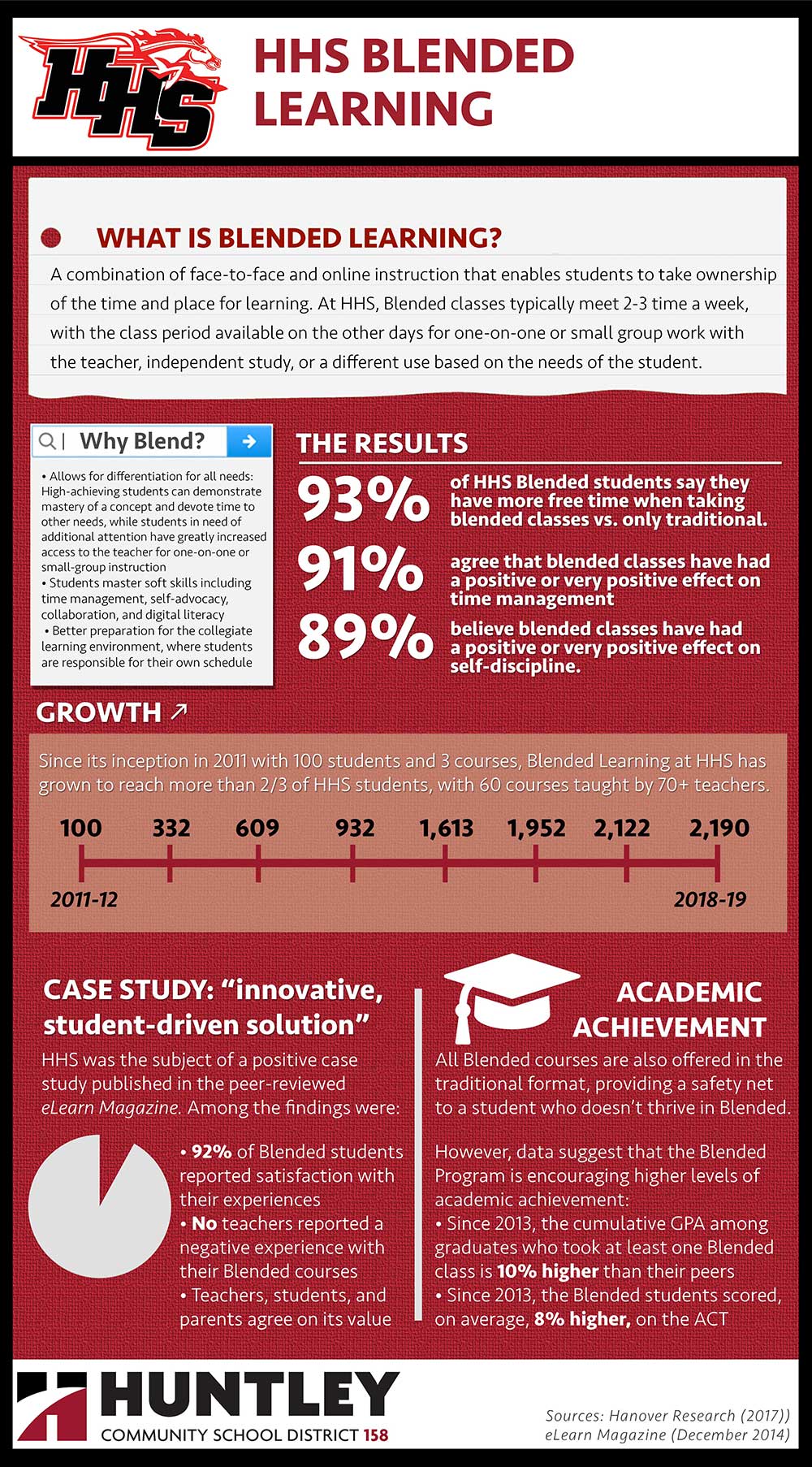 The Huntley 158 Always Initiative is an umbrella concept focused on developing programs throughout the District that break down the barriers of the traditional school day.
The Huntley 158 Always Initiative is an umbrella concept focused on developing programs throughout the District that break down the barriers of the traditional school day.
Primary among these efforts have been the District’s pioneering 1:1 initiative, recognized as the largest district-wide rollout of personalized learning devices in the State of Illinois, and Huntley High School’s unparalleled Blended Learning Program.
Out of those programs have grown a number of distinctive opportunities for Huntley 158 students, including a recently announced only-of-its kind partnership with Northwestern Medicine Health System.
Through the HHS Medical Academy, some 30 students will take part in the inaugural Youth Residency Program, offering them the opportunity to receive intensive job shadowing and mentorship with healthcare professionals throughout the Northwestern system. Learn more »
1:1 Learning
Huntley 158 began implementing 1:1 learning with a pilot program at Martin Elementary School in 2012. In fall 2016, we completed our implementation with the high school juniors and seniors, cementing Huntley 158’s position as the largest provider of personalized learning devices K-12 in Illinois.
Heralded not just for its size but also for the quality of curricular integration with technology, the District has presented at a number of statewide and professional conferences and continues to host several site visits every year from other school officials seeking to learn from its model.
Blended Learning
The Rationale for Blended Learning
In the simplest terms, Blended Learning is a combination of online and face-to-face learning. While many schools across the country have some form of Blended Learning (most commonly at charter or other non-traditional public schools), Huntley High School practices a novel approach focused on:
- Breaking down the time constraints of the traditional school day
- Giving students more ownership over the time and place for learning
- Enabling differentiation to meet the instructional needs of all students.
History of Blended at HHS
- Blended Learning was piloted in 2011 with 100 students and three teachers.
- Since then it has exploded. Today, well over two-thirds of the student body take at least one Blended class.
- HHS currently offers more than 60 classes in Blended format, across all subject areas, from foreign languages to math to foods to PE.
- Unlike many online or technology-aided programs at charter or private schools, District 158 did not purchase a prepackaged system, curriculum, etc. Rather, the program was built from the ground up using existing staff and guided by the needs of HHS students.
- No significant capital expenditure was required.
How It Works
At HHS, Blended classes typically meet face-to-face as a whole class two days a week. On the remaining days, students are responsible for online work and have the class period to use as they wish. For example:
- A high-achieving student who has mastered course material can complete the required work online without having to sit through class periods covering topics they’ve already mastered.
- A student who requires additional attention from the teacher can get it by visiting the teacher when the class does not meet as a whole to receive one-on-one or small group instruction.
- A student could use the class period for other purposes, such as meeting in small groups, completing work for another class, going off-campus, or taking a nap. He or she can then complete the Blended classwork at a time that better suits their schedule/learning style.
- The experience mirrors that of and better prepares students for college, where no one is telling you exactly where you must be and what you must be doing at any given time.
- However, a “safety net” exists in that students who fail to keep up in the Blended format. All Blended classes are offered simultaneously in the traditional format, and struggling students can transition to the traditional format.
Outcomes
- 91% of students say Blended classes provide an environment that requires more self-accountability
- 85% of students agree Blended classes are beneficial to the student
- 80% of students agree Blended classes help them manage time and get more work done
- No teachers surveyed reported a negative experience with Blended Learning
While Blended is not specifically focused on improving GPA or standardized test achievement, since 2013:
- the cumulative GPA among students who took at least one Blended class is 10% higher than their peers, and
- Blended students scored 8% higher on the ACT.
In the News
HHS was ranked as the #1 blended learning high school in the United States by study.com and was the subject of a case study in the peer-reviewed journal eLearn Magazine and has been featured in national media including CNN, Parenting Magazine, and the GettingSmart blog.

